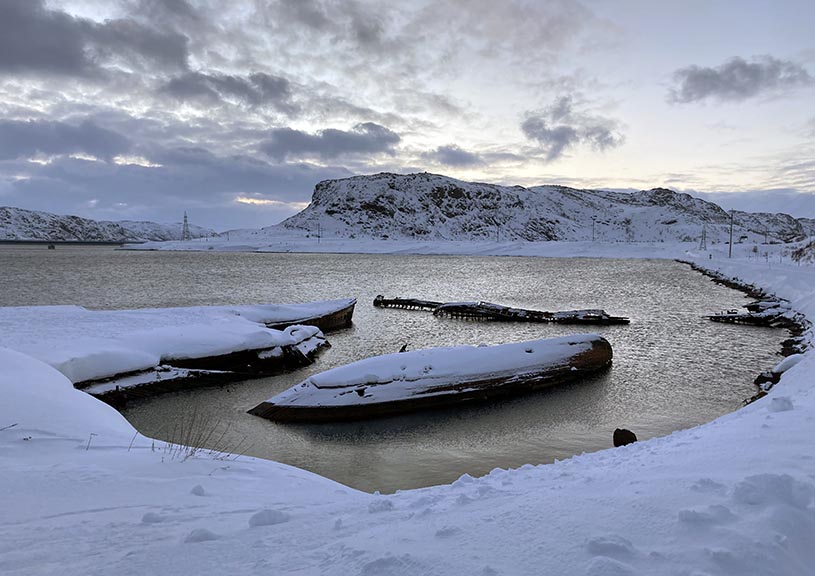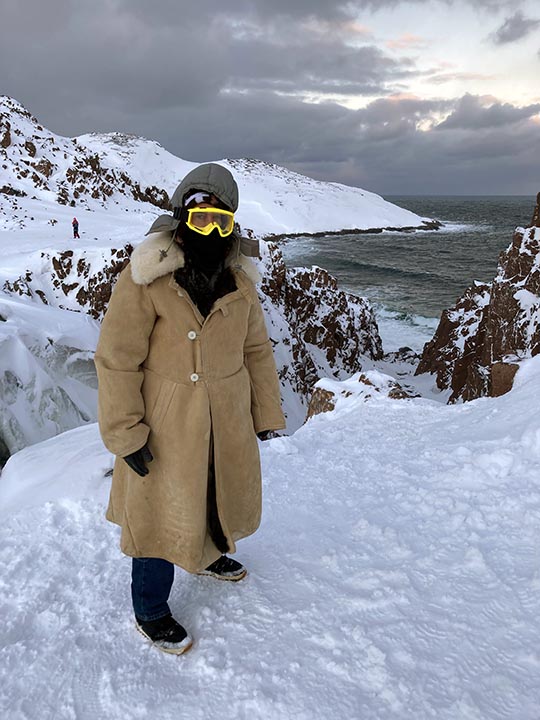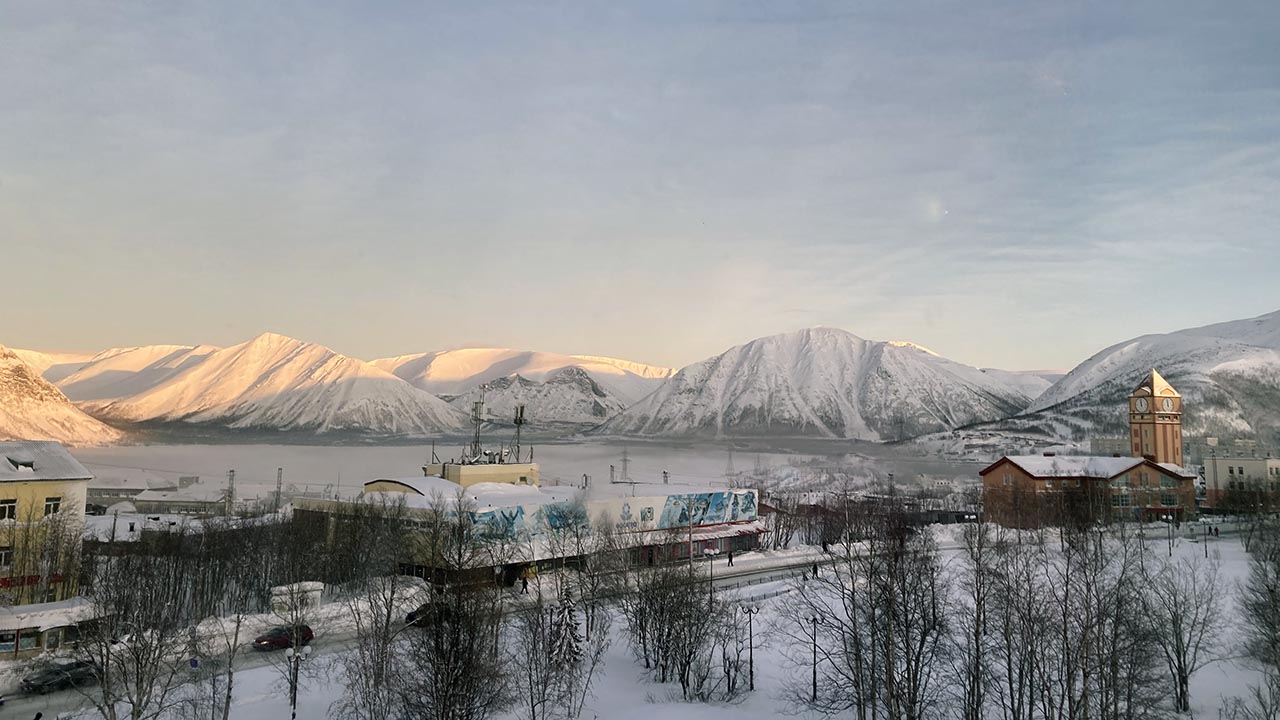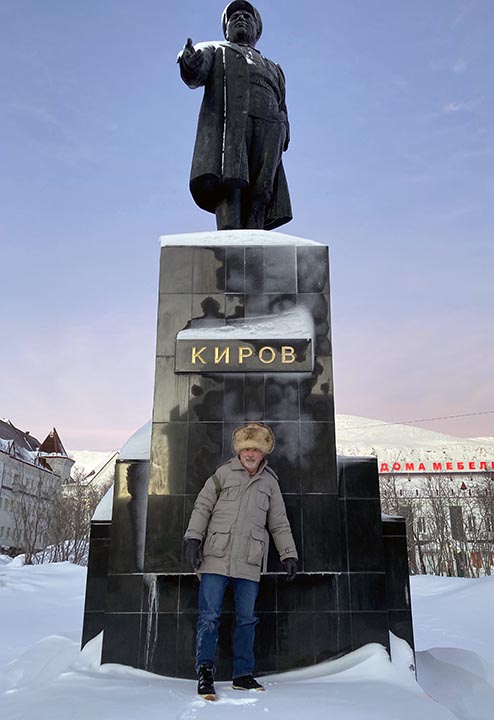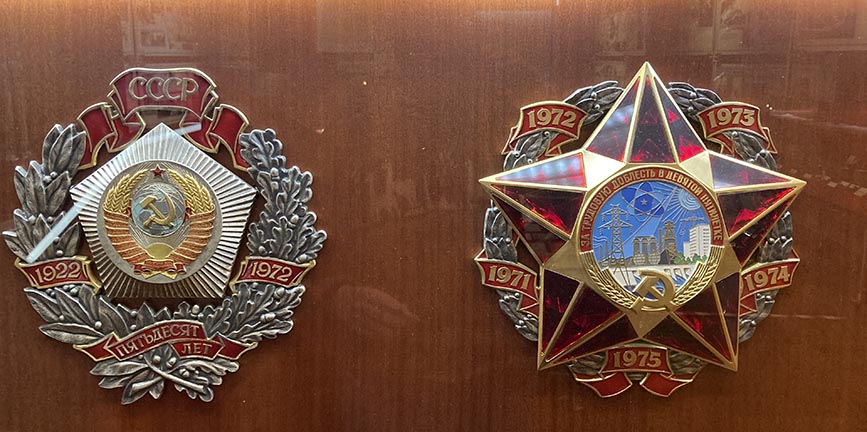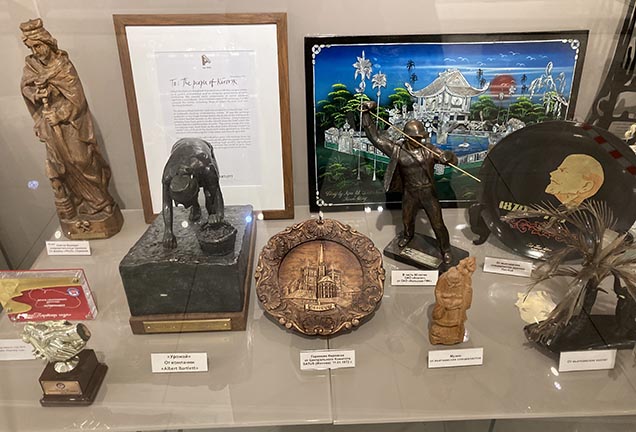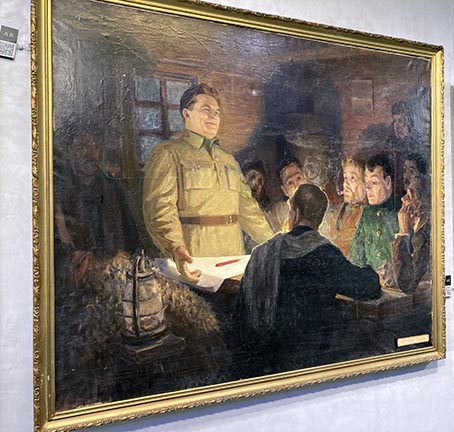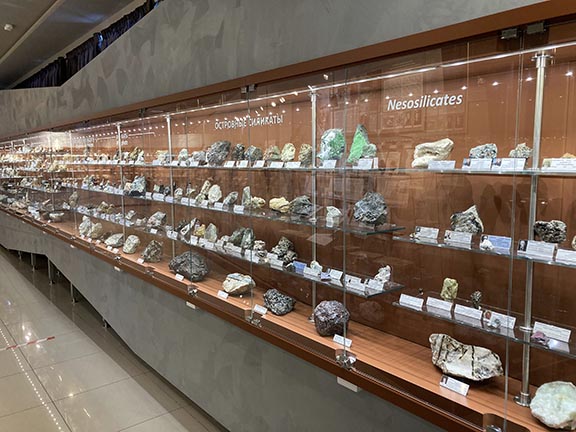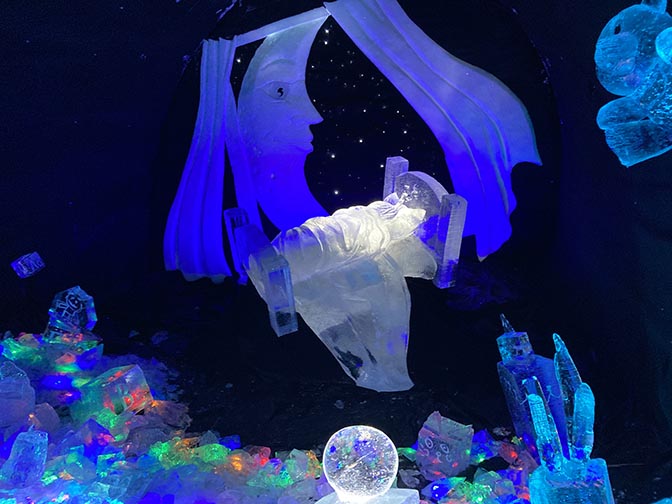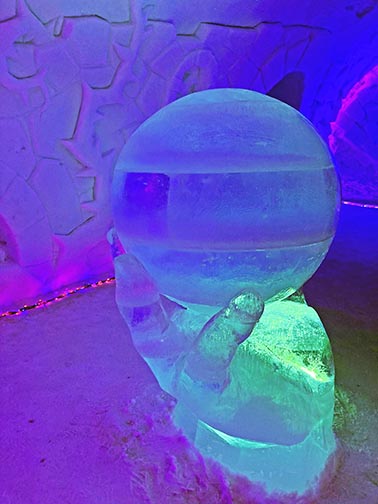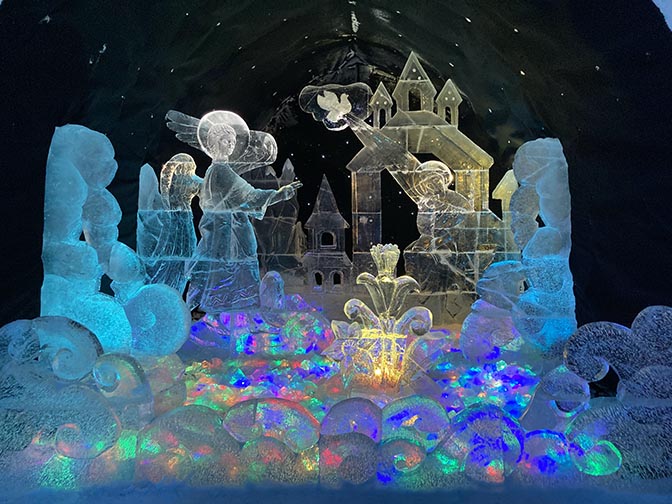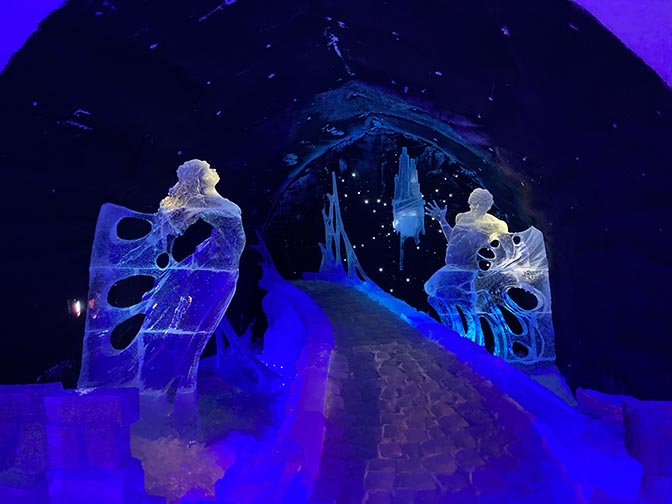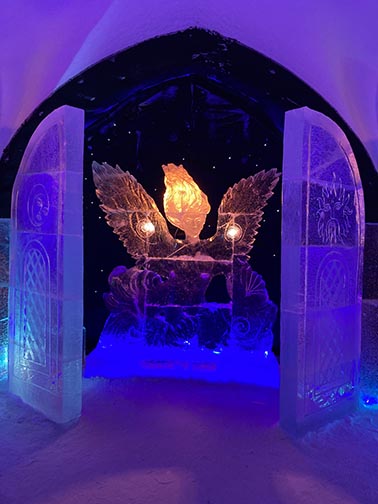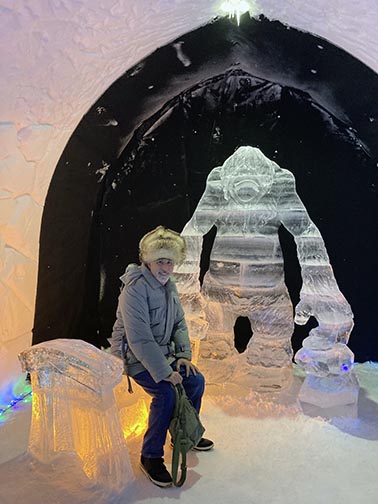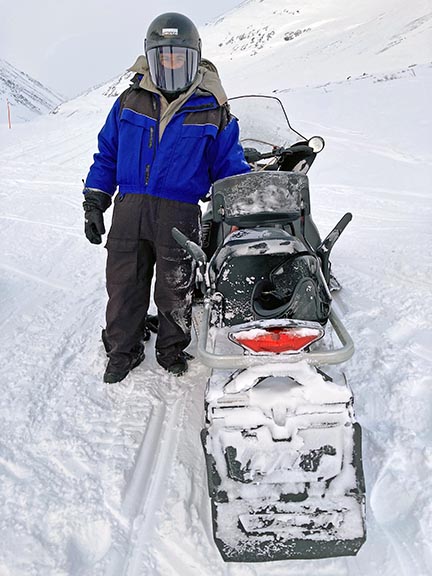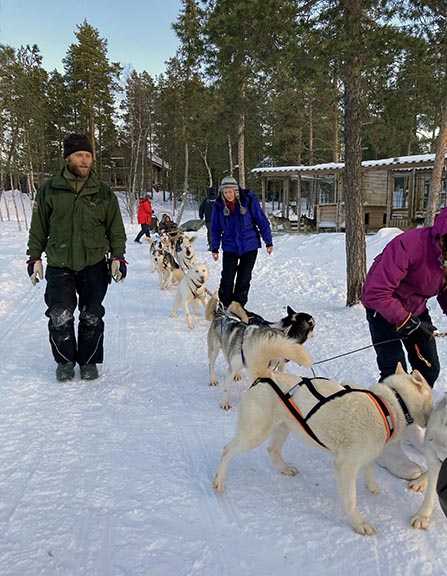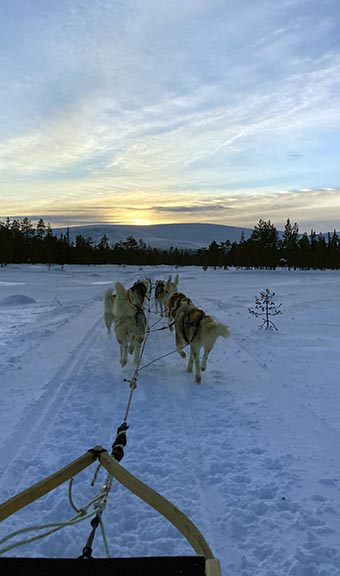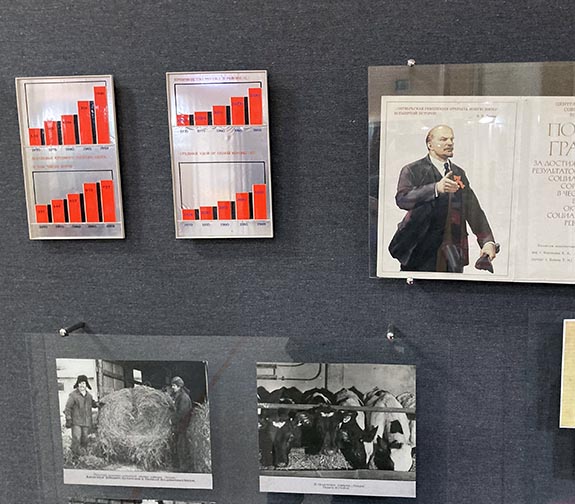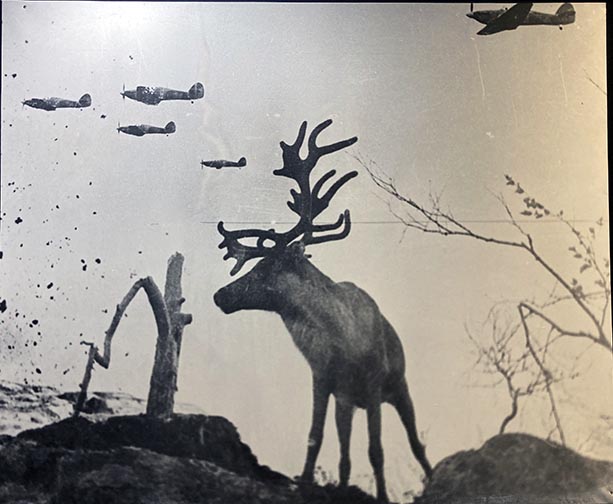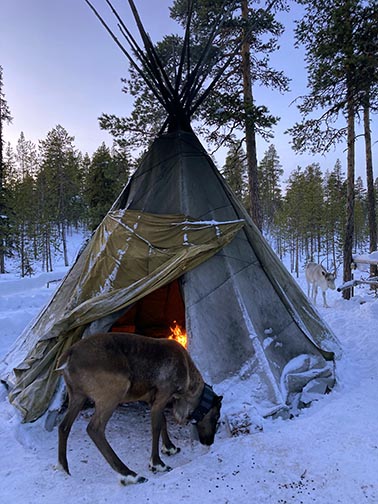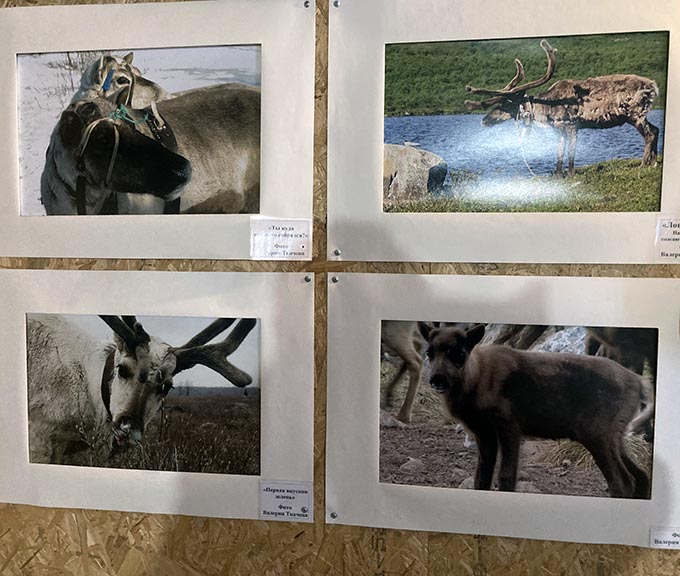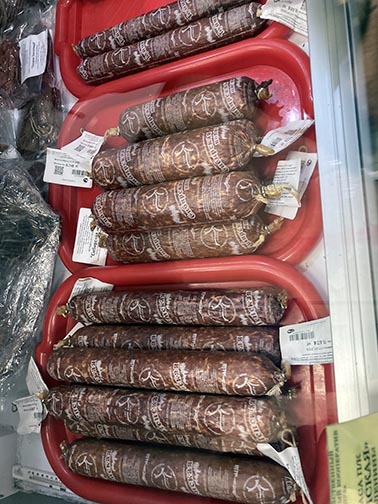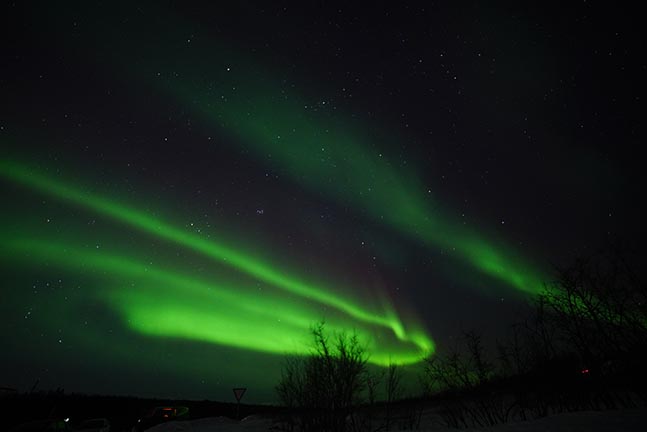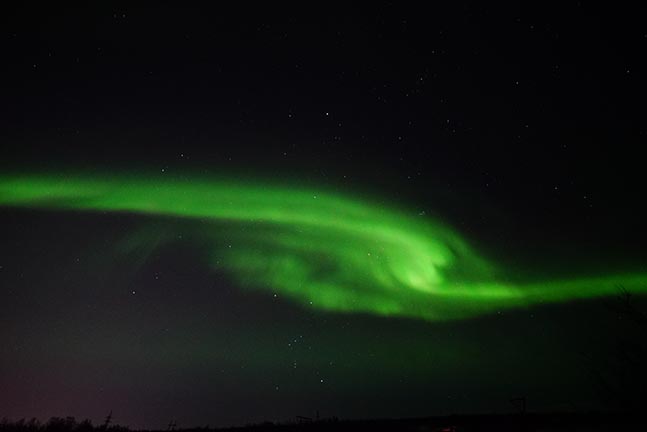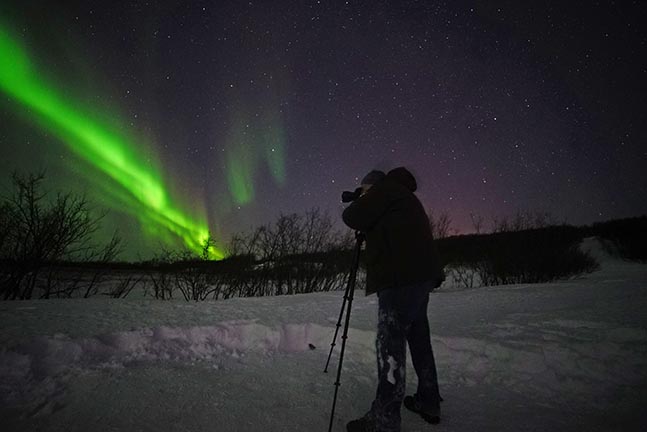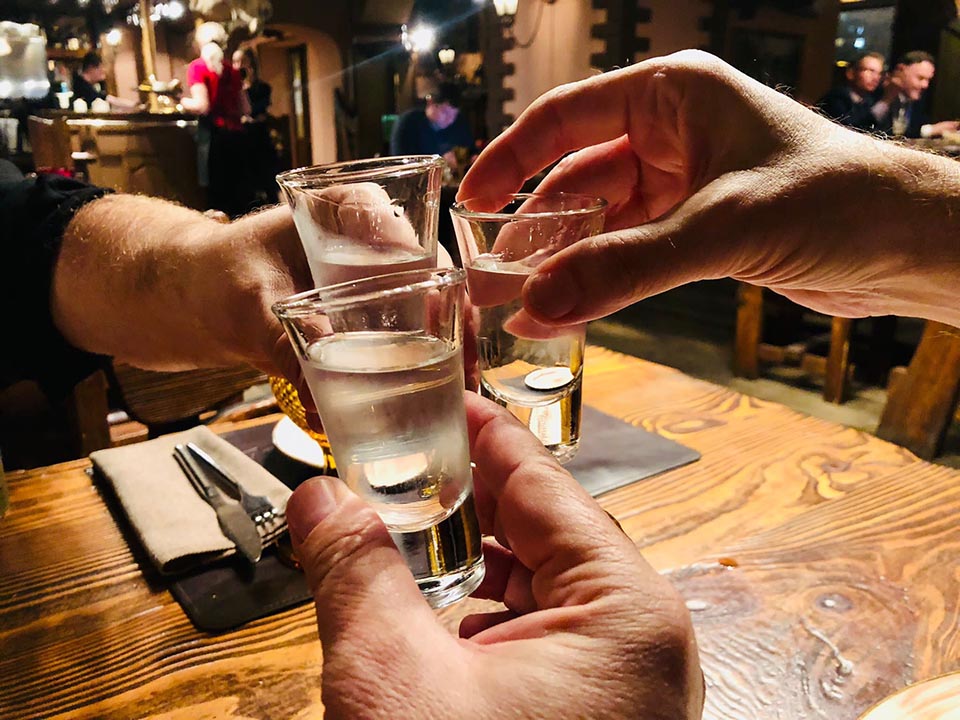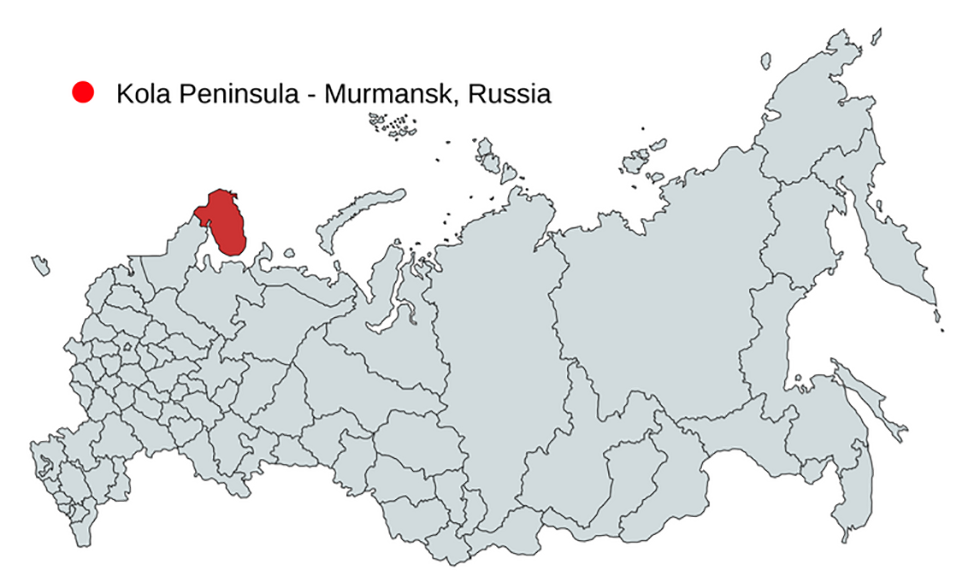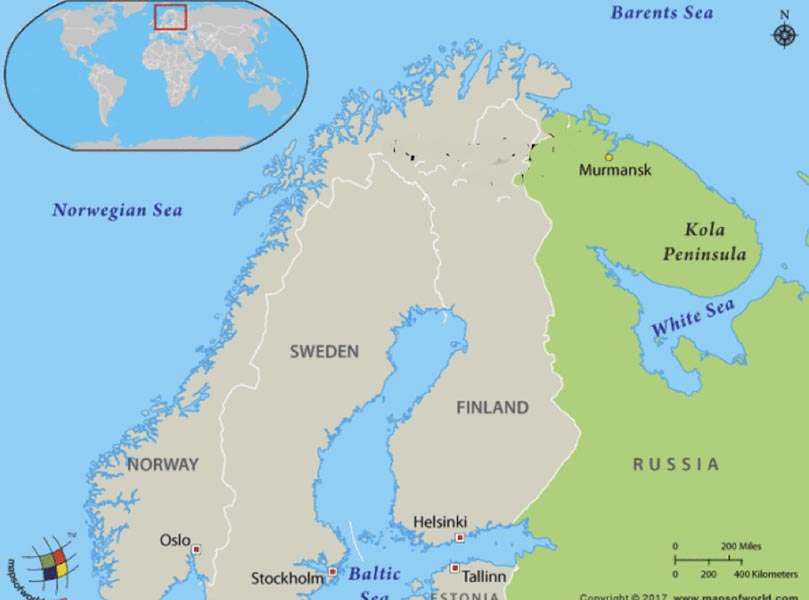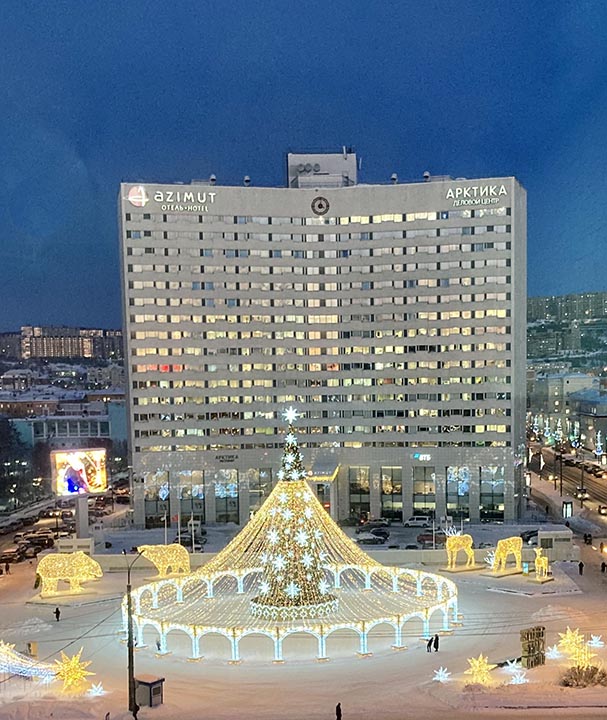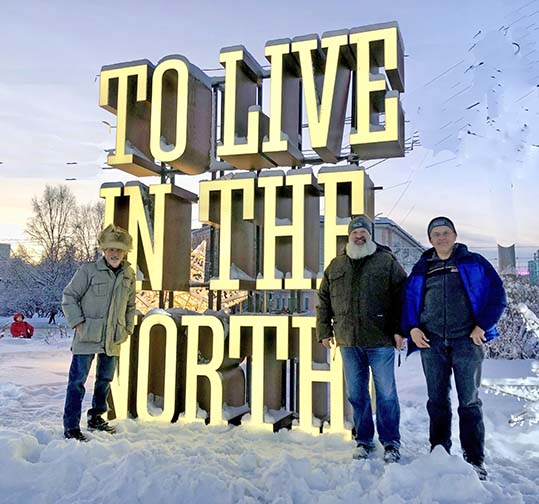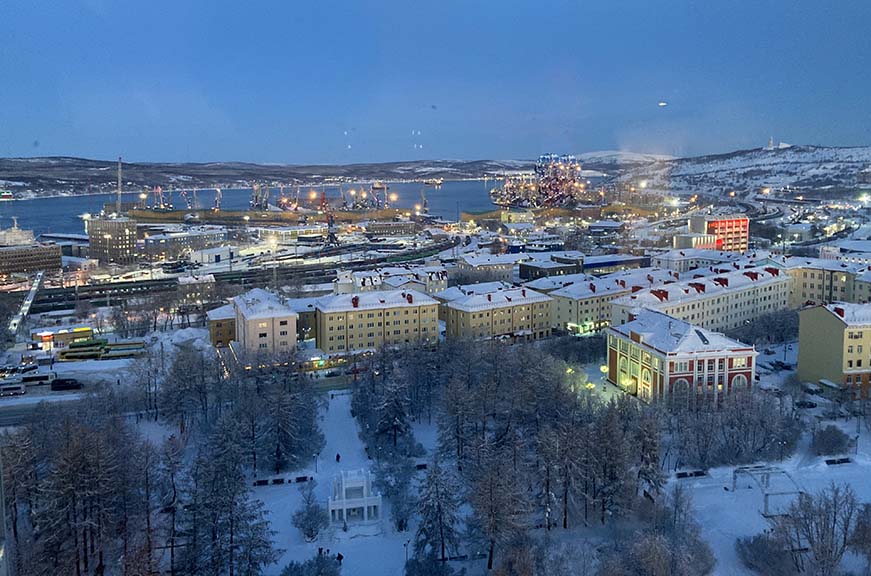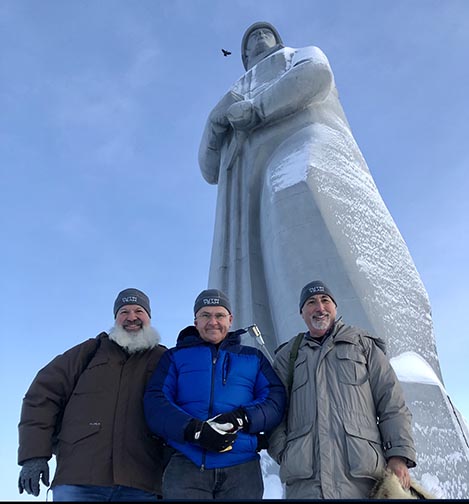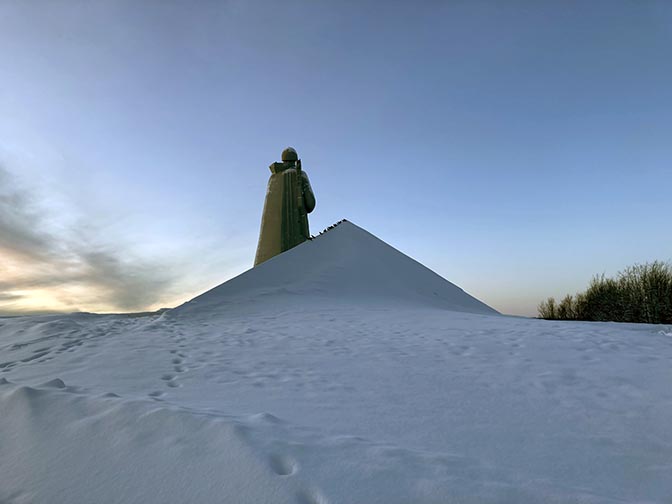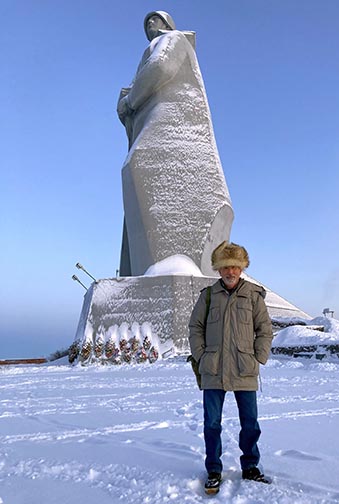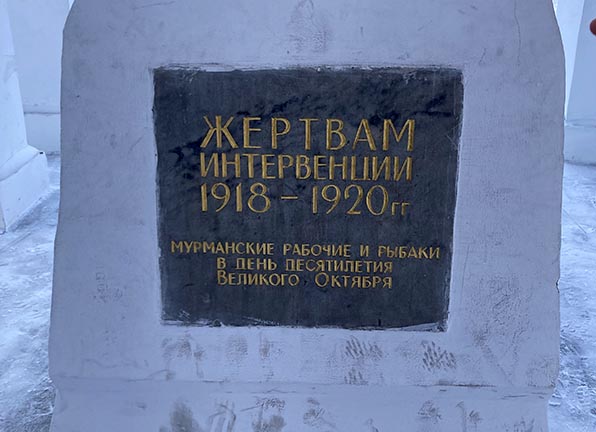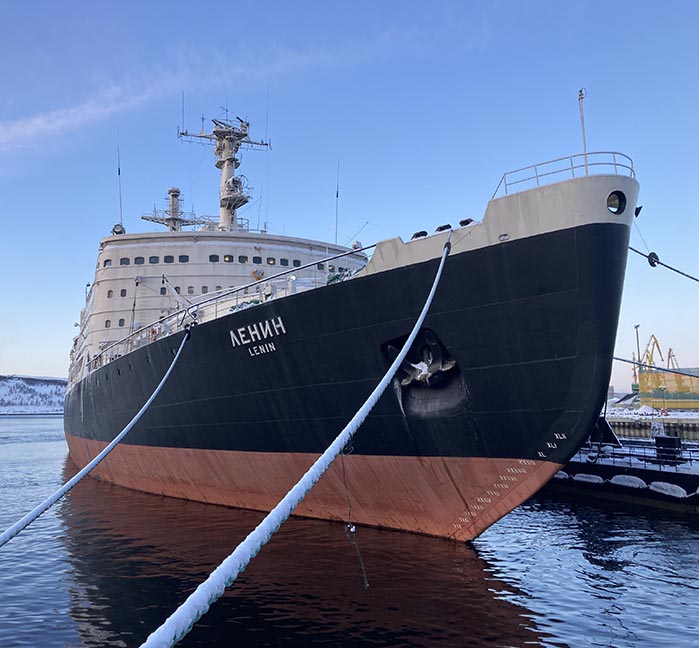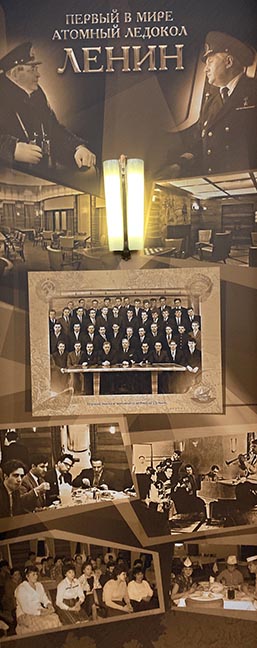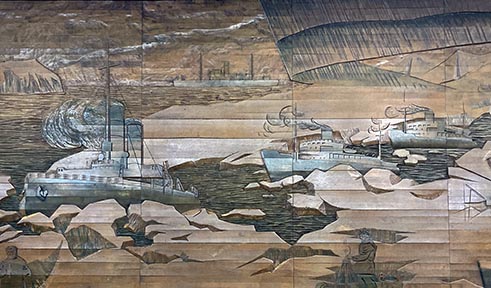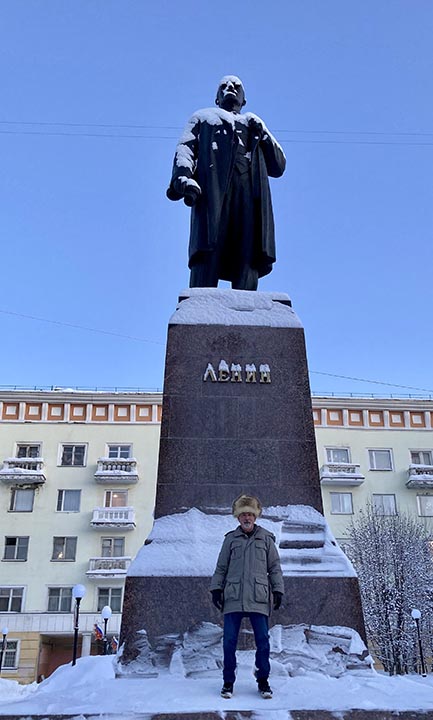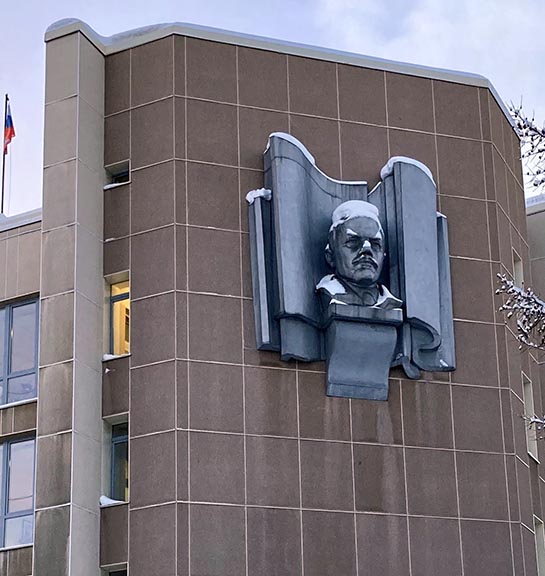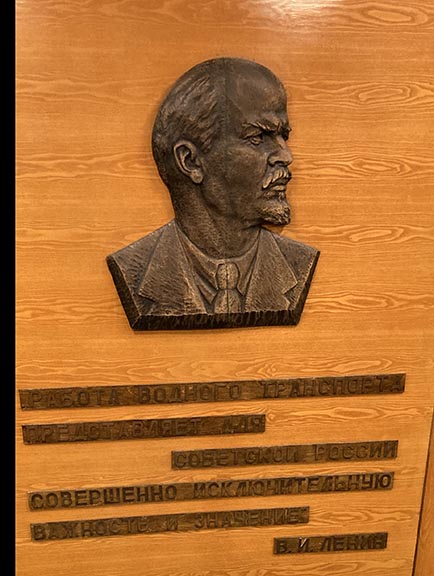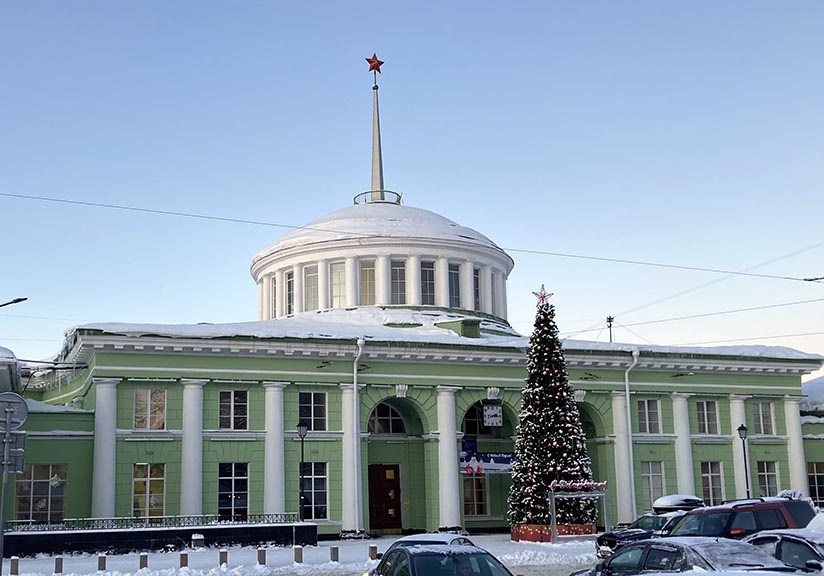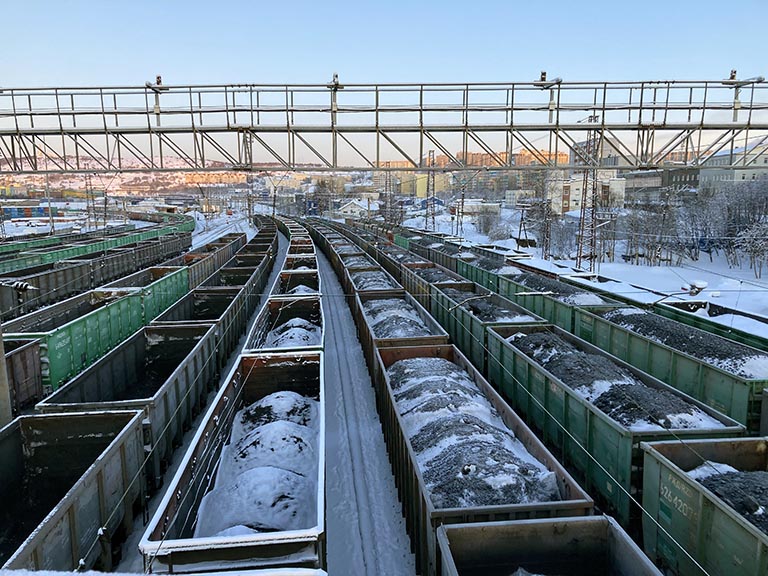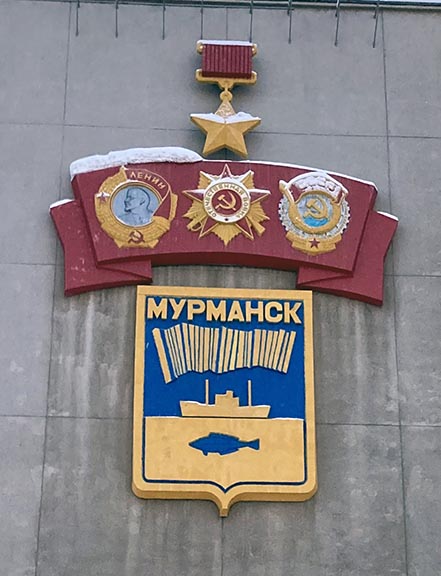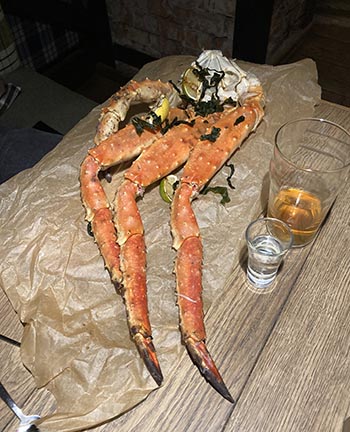|
|
|
|
True North
Seeing the Northern Lights has long been on my bucket list. But to do so you need to be up near the North Pole, during Winter; and it’s cold there and then. Hence, a short but intense trip to Murmansk, the largest city north of the Arctic Circle.
It’s a two and half hour flight north from Moscow to the top of the Kola Peninsula. It’s dark when we land: the month-long polar night has just ended (it lasts six months at the Pole) and the daylight hours, while rapidly increasing, are still very short. We meet up at the Azimut Arctic Hotel, the tallest building north of the Arctic Circle. With me on this private tour are Harris from Philadelphia and Bengt from Stockholm. Pavel is our guide.
|
|
|
The first day plan is to travel to Teriberka on the Arctic Ocean, but the road is closed due to heavy snowfall so we start off with a city tour.
Murmansk was the last city established in Czarist times. It was founded in 1915 as a port to receive supplies during WWI from the Allies. The location was chosen because, despite the extreme latitude, the Gulf Stream/North Atlantic Current permits an ice-free harbor. During WWII it was the destination of the lend-lease convoys. As the base for Soviet Northern Fleet, the city was closed to foreigners during the Cold War. It also holds the signal honor of being a sister-city of Jacksonville, so I feel right at home.
|
|
The sights are limited but quite interesting. We don our official tour caps (courtesy of Harris, who stopped by the Team Putin shop at the airport, this being before the late unpleasantness in Ukraine) and first visit the Monument to the Defenders of the Soviet Arctic, a/k/a “Alyosha”, a 115 foot tall statue of a Red Army Soldier on a hill overlooking the city. Being less than 70 miles from then-occupied Norway, Murmansk endured over 700 German air raids and an unsuccessful ground assault during the war.
|
|
|
|
|
Considerably more modest is a modest is the Monument to the Victims of Foreign Intervention. From 1918-20 Murmansk was occupied by western forces, including 5000 US Army troops, in support of the White Russian forces opposed to the Bolsheviks.
|
|
The world’s first nuclear-powered icebreaker, the V.I. Lenin, is now a museum ship.
|
|
|
|
|
|
And of course, we seek out old Vlad himself.
|
|
|
|
|
The train station and extensive freight yards, and the city seal depicting the northern lights, a ship, and a fish.
|
|
|
|
|
Sunrise comes late and sunset early. The plaza in front of the hotel is festively illuminated.
|
|
|
The seafood is fresh and the reindeer tasty.
|
|
|
The road to Teriberka is open! We set off early for the two-hour drive. I am amazed that cars race along the completely snow-covered road at highway speeds.
|
|
This village dates to the earliest Russian settlement on the Murman (the name is a cognate of “Norman” and “Norseman”) coast some 500 years ago. During the Soviet era it was the site of significant (i.e. crazy) economic development, most of which is now abandoned. What remains is fishing and tourism.
A graveyard of wooden boats and a whale skelton. We bundle up and transfer to snowmobile-drawn sleds to visit a frozen twin waterfall and a seashore lined with smooth round boulders. As you might deduce from my garb, the arctic wind is fiercely cold. After a delicious seafood lunch, we catch up on our schedule by driving five hours south to Kirovsk where we check into a very comfortable hotel. Located at the foot of the Khibiny mountains, Kirovsk is a mining town that has become ski and winter sport destination. The town is one of many places and things named for the assassinated Bolshevik. His statue is on Lenin Prospect across for the hotel. (The Lenin statute is on someone else street.) Just down the street is the local museum. Commie kitsch, art, and a Systematic Mineral Collection of the Geology of the Kola Peninsula. A winter ice sculpture exhibition. Beautiful and truly impressive. Then we suit up for a snowmobile expedition into the mountains. A ride to a remote guesthouse and a meal (reindeer, of course). On the way back we encounter blizzard conditions where it is all I can do to follow the taillight of the guide fifteen yards ahead. That night we waste a few hours trying to see the Northern Lights, the putative purpose of this trip. The problem is that you need clear skies to see them, and the places most hospitable to human habitation tend to be overcast. A thousand miles east in the Siberian arctic there are no clouds, but no one lives there. In the Murmansk region the warmer water that allows the port also creates snow and clouds. The next day we drive to Lovozero, capital of Russian Lapland. The Lapps, who call themselves Sami, also inhabit the northernmost portions of Finland, Sweden, and Norway. There are only about 2000 Sami in Russia, but their population has remained relatively stable for the last hundred years or so since first counted. First stop is the husky park. Dogs are not native to this area but have adapted well. The family-run business offers lunch (reindeer, of course), a model Sami settlement, and a dog-sled ride. All enjoyable. The local museum has a bit of everything: ethnography, history, art, and culture. The building itself is a history lesson: in czarist times it was the first church in the area, then the soviets turned it into the local Palace of Culture, and now it is a regional museum. That evening, we set out again to find the aurora. Another bust. The next day is the big adventure: an all-day snowmobile trek to the reindeer camp. It’s a couple of hours to the camp, where fifty or so men tend to the herd. The pinups on the walls: reindeer.
After a hearty lunch (reindeer, of course) we set out to visit the herd. At least that is the plan. And my one beef about the trip. One would think that fifty guys whose only job is to look after the herd would know where it is. But, noooo, they have no idea. We joke sardonically: “Did you hear the one about the Russians who lost 9000 reindeer?” After a few hours of pounding across the frozen tundra around while our “guides” scan the horizon with binoculars, it is getting dark so we give up and start back. After a while we stop. Off in the distance, in the fading light, on the other side of a fence is a darkish area. Harris sends up his drone and captures a twilight video of the herd on the move. Gee, it would have been great to see it in person!
The next morning, after a stop at the reindeer butcher shop so Pavel can stock up on reindeer sausage, we drive back to Murmansk. The trip is over, or so it seems. The skies have been clear all day. The aspects look right. Pavel is leaving us so we engage another guide, Alex, to give one last try to see the lights. After another great meal and a celebratory toast, we get picked up from the restaurant and driven out of the city to escape its lights pollution. And the payoff is the aurora borealis. My camera is crap for this sort of stuff but Alex knows what he is doing and shares his images.
A grand finale to a grand trip. Despite the cold, we have vodka to keep us warm and stay out until the wee hours. In the morning, the first of three flights brings me home
